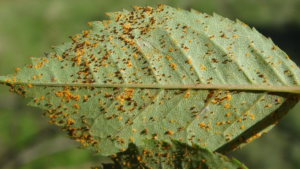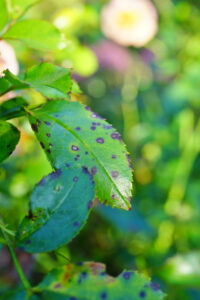Early Summer Plant Care: Diseases of Roses
Black Spot of Roses:
Diplocarpon rosae is a fungal disease that affects most rose varieties, especially during cool nights where moisture remains on the plant. It is evident by the feathery black lesions on leaves, which eventually turn yellow and drop. In severe cases, it can defoliate the plant, but new leaves will form later in the year. Black spots cause dark lesions in the roses’ stems, releasing spores that can infect new leaves yearly unless the affected stems are removed. Our Arborist, Terry, hard prunes his roses in late Spring, after the initial bloom, to remove diseased tissues and any damage from sawflies, leaving little for Japanese Beetles to feed on and allowing another prolific bloom in Summer. He often advises that “roses are so susceptible to insects and diseases that they are often better suited for people who like to be in their garden every two weeks.”
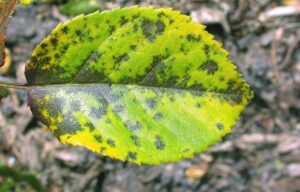
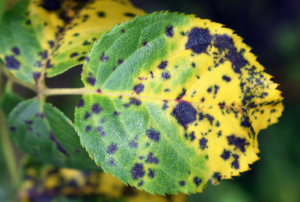
Rose Rosette Disease:
Rose Rosette Disease, also known as RRD, is a virus that causes the most damage to roses. RRD is evident by the cluster growth of the leaves, thorns, and flowers, which typically stay a reddish color. It can easily spread to healthy roses via mites and pruning equipment, so affected roses should be removed promptly. RRD has a high mortality rate, and infection can occur at any time of the year. The disease lives in the remaining root tissue left in the soil, so do not replace affected roses with other roses.
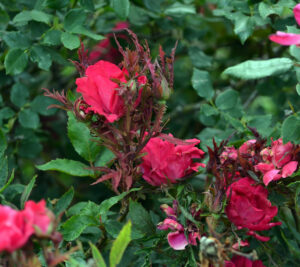
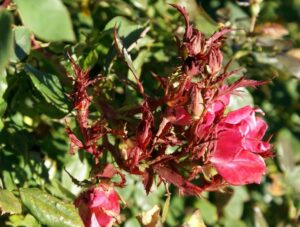
Other Diseases for Roses:
Other diseases that infect roses in Spring are powdery mildew, Cercospora leaf spot, and rust. Damage from these diseases is far more superficial than black spots and more easily controlled with fungicides alone.
